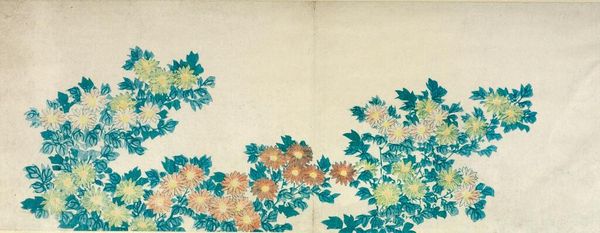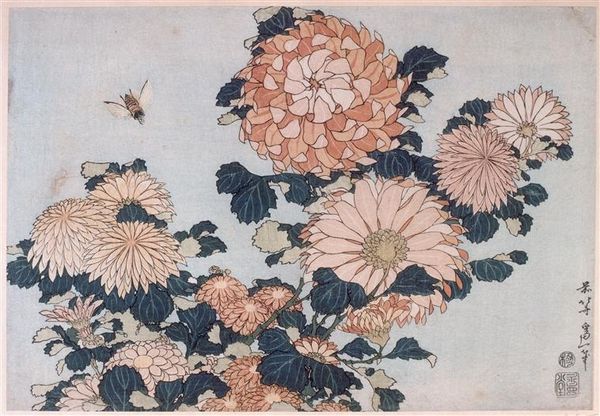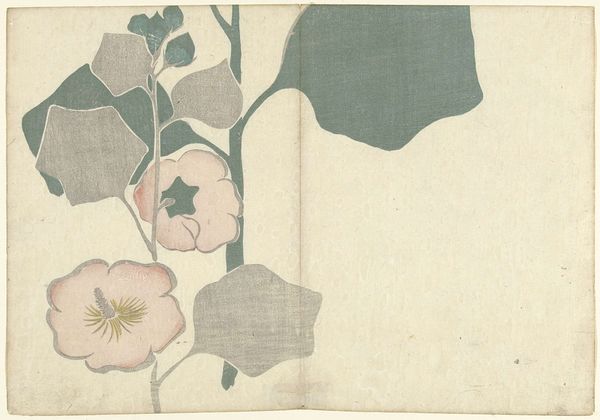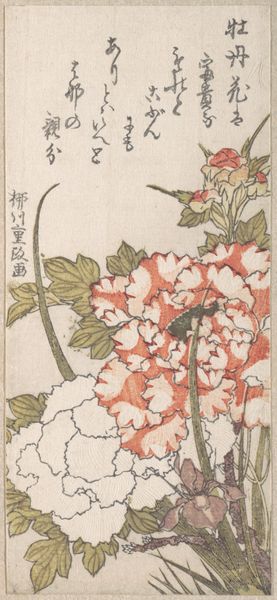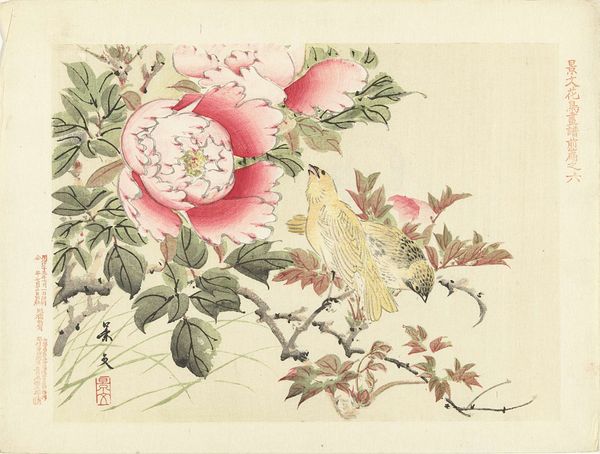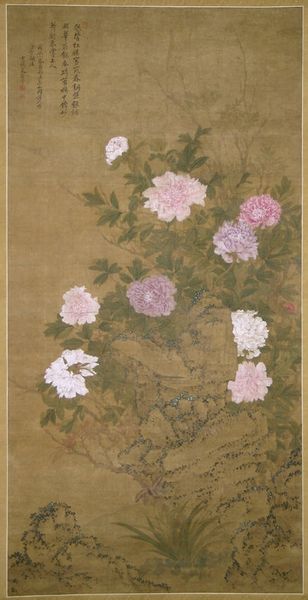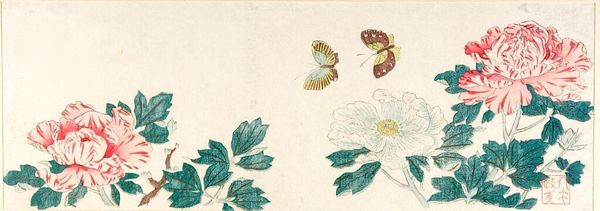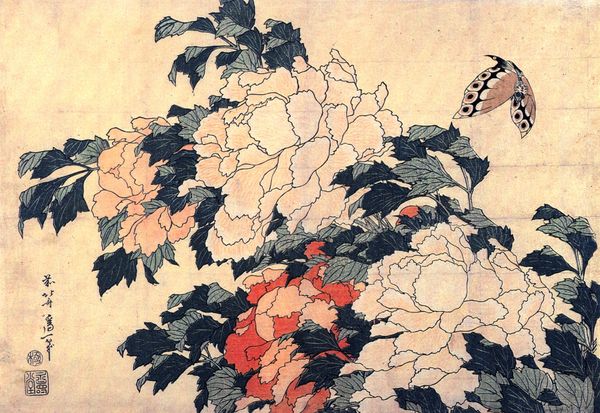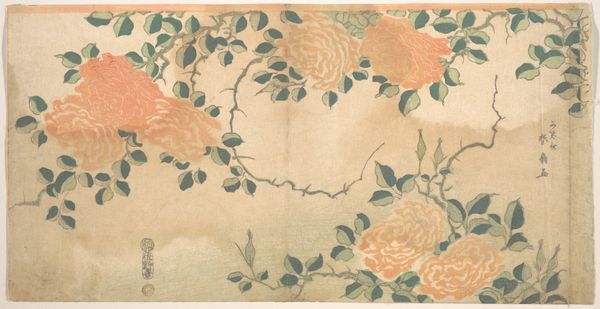
Chrysanthemum, from the series Gods of Good Fortune Represented as Flowers (Hana zukushi mitate fukurokuju) c. 20th century
0:00
0:00
Dimensions: H. 23.5 Ã W. 30.2 cm (9 1/4 Ã 11 7/8 in.)
Copyright: CC0 1.0
Curator: What strikes me immediately is the density of these chrysanthemums; they almost vibrate against that rose background. Editor: This is "Chrysanthemum, from the series Gods of Good Fortune Represented as Flowers (Hana zukushi mitate fukurokuju)" by Utagawa Hiroshige, now at the Harvard Art Museums. It is a woodblock print, so think about the labor that went into carving the blocks. Curator: The fan shape is important; it flattens the perspective and focuses the viewer on the intimate space of the flowers. It speaks to ideas about leisure and refinement, but also social status. Editor: Yes, and Hiroshige's choice of the chrysanthemum, traditionally associated with the Japanese Imperial family, can be read as a subtle commentary on power structures. Curator: I appreciate how the blooms are rendered, petal by petal. This level of detail speaks to the value placed on craftsmanship and artisanal skill. Editor: I think that this piece provides a lens through which we can view the intersection of botany, symbolism, and societal hierarchy in 19th-century Japan. Curator: Precisely; it's a potent reminder that even seemingly simple objects can contain layers of cultural meaning and artistic labor. Editor: A beautiful illustration of how an image can hold both cultural history and the artist’s own critical perspective.
Comments
No comments
Be the first to comment and join the conversation on the ultimate creative platform.
